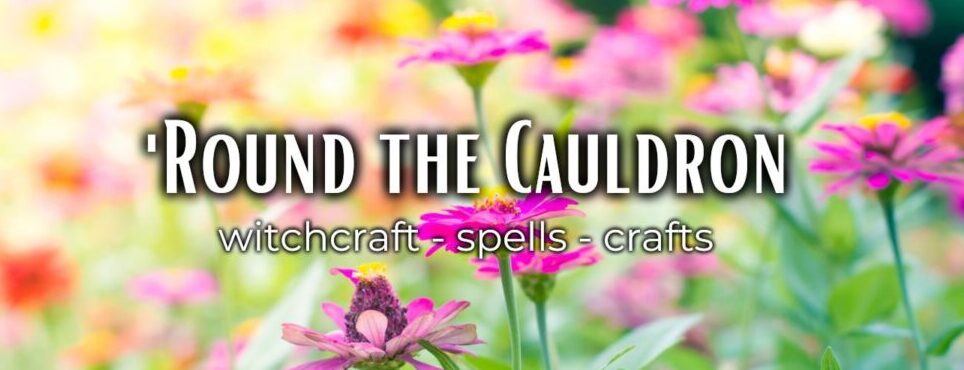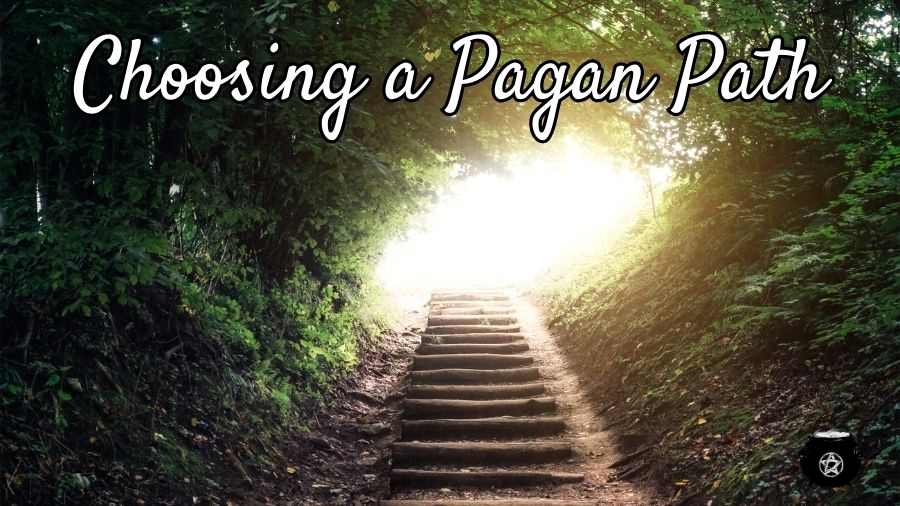Finding the right pagan path can be difficult when you aren’t sure where to go. There are so many roads, so many different types of beliefs out there to choose from! Of course, I say “choose” very lightly, because I’m not sure if we even choose our beliefs. But you’ll never know which path to take if you’re not exposed to the paths that are out there.
Paganism is an Umbrella Term

Understanding what paganism is will be important for choosing your pagan path. When we say that paganism is an umbrella term, we mean that it is the overarching word for many different types of beliefs. We can think of it as a literal umbrella. Anything under the umbrella is a more specific type of paganism.
Paganism is defined in two ways. One is that paganism is a religion other than one of the main world religions, specifically a non-Christian or pre-Christian religion. The second is that paganism is a modern religious movement incorporating beliefs or practices from outside the main world religions, especially nature worship.
With that in mind, it seems that any religious belief system that isn’t either Christianity, Islam, Hinduism, Buddhism, and Judaism. That leaves a lot of other paths open!
Pagan Paths and Theistic Beliefs
Many pagans and polytheistic people worship or work with many deities. That isn’t always the case, though, and there are some terms you may want to be aware of when choosing a pagan path to follow. These terms are just meant to be starting points or further information to help guide you. You may find several that resonate with you, or you may not resonate with any of them! Both options are okay.
Animism
Animism is the attribution of conscious life to objects in and phenomena of nature or to inanimate objects. That’s a really long way of saying that nature and inanimate objects can and do possess their own spirit or energy, sometimes even conscious life. An animist may refer to natural landforms and other aspects of nature as having personhood.
One really good explanation of animism is in the book Braiding Sweetgrass by Robin Wall Kimmerer — if you haven’t read it, I highly recommend you do. If you get the chance, listen to the audiobook because it’s narrated by the author and it brings so much more to the book. It’s wonderful!
Monotheism
Monotheism is one that many of us are familiar with. This is the belief that there is only one God. This is the category of theism that Christianity falls into. However, Christianity isn’t the only religion that falls under monotheism. For example, some practitioners view Voodoo as a monotheistic religion because they believe in one supreme deity. Per our definitions above, Voodoo is also considered a type of paganism.
Duotheism
This theistic view is the belief that there are only two Gods. Some Wiccan traditions may fall into this category with the way they view God and Goddess.
Pantheism
Pantheism has a few different definitions. One is the belief in and worship of all gods, no matter the religion. The other definition of pantheism is a bit more accurate, and also a bit more confusing to me because I don’t see the world this way. Wikipedia says that pantheism is the view that everything is part of an all-encompassing, immanent God. To pantheists, the Universe and God are one and the same.
Polytheism
Another common theistic belief among pagans is polytheism. This is the belief in or worship of more than one god. I further break polytheism down into two more categories — hard polytheism and soft polytheism. Soft polytheism is the belief that all deities are a facet of one higher power or energy. Hard polytheism is the belief that each deity is their own entity and not part of a higher power.

Henotheism
This theistic view is one I don’t see mentioned very often so I will briefly mention it here. This is the worship of one god without denying the existence of other gods. I think many pagans and polytheists may also be henotheistic. This may even apply to me right now since I mainly work with one deity while not denying the existence of others.
Faith in a Pagan Path
Among the different types of theistic beliefs, there are different pagan paths you can take. These include Wicca, Celtic paganism, Druidry, Norse paganism, and so many more. I want to give you a brief overview of each pagan path, plus some resources to learn more! Please remember that this list is not exhaustive! It would be near impossible for me to list every single pagan path out there. This is merely a starting point!
Wicca
Wicca is the most well-known path in paganism. Most people are aware of Wicca, at least by the name. In fact, most people probably came into paganism through Wicca as that’s the form of paganism that’s been sort of mass-produced, for lack of a better term. There are two different types of Wicca — neo-Wicca and Traditional Wicca. Traditional Wicca is an initiatory religion while neo-Wicca is based on the outer circle information that’s been published by other Wiccans.
Traditional Wiccan information, the things you learn after being initiated, is oathbound and not for the uninitiated. Neo-Wicca is open to everyone that wants to practice because it’s not an initiatory religion.
There are varying traditions within Wicca that have different beliefs. Some Wiccan covens are based on strict duo-theism, worshipping the Lord and the Lady — a male and female divine figure. Others are more fluid in the deities they worship, and still others ignore the male divinity entirely and strictly focus on female divinity.
Most Wiccans I’ve come across also practice some form of magic, but not all Wiccans do. Some Wiccans only cast spells during ritual, and others don’t cast spells at all. That choice is entirely up to them and their coven.
Celtic Paganism
Celtic Pagans are pagans that work with or worship one or more of the deities from a Celtic pantheon. If you’re not familiar, the word Celtic doesn’t refer to a region but a language. The Celtic countries include, but aren’t limited to, Ireland, both Northern and the Republic of Ireland, Scotland, The Isle of Man, and Wales. Some Celtic pagans may choose to worship or work with Celtic deities from many different countries. Others may choose to work with deities from one country only.
Norse Paganism
Norse Pagans are pagans that work with or worship the Norse deities. I’m not too familiar with much of Norse paganism other than the fact that there are many names and branches. There’s heathenism, Asatru, and probably more that I can’t name. These pagans may work with deities such as Odin, Hel, Loki, and Freya. If you’d like more information on Norse paganism, I recommend subscribing to Bente, The Norse Witch, on YouTube.
Hellenic Paganism
Hellenic Pagans are pagans that work with or worship the Greek deities. This can be the Olympians, lesser gods, and other Greek entities. In my experience, the Greek deities tend to be the easiest to find information on, at least here in the United States. No one bats an eye at someone who says they’re interested in Greek mythology.
There is also a difference, I have found, between Hellenic paganism and Hellenismos. If I’m not mistaken, Hellenismos is when someone is seeking to recreate the religion and rituals of the Ancient Greeks. Hellenic pagans may or may not work based on the way the ancients practiced. If you’re looking for more information on Greek paganism, I recommend Fel the Blithe on YouTube.
Druidry
Druidry is a combination of Celtic paganism and nature-based worship. The Druids generally believe in a symbiotic and peaceful relationship between humans and all beings of Earth, both seen and unseen. They may work with or worship many different Celtic deities, including those from Ireland, Wales, and Brittany. There are several modern Druid organizations in the world today including The Order of Bards, Ovates, and Druids and Ár nDraíocht Féin.
Eclectic Paganism
Eclectic Paganism is a sort of amalgamation of multiple types of paganism. An eclectic pagan may worship or work with deities or beings from many different pantheons, blending them together in a way that works for them and their beliefs. Generally, as long as the cultural context of the deities involved is taken into consideration and no misappropriation is happening, this is okay.
Picking your Pagan Path
Remember that these branches of paganism barely scratch the surface of the beliefs that are out there. Choose one that calls to you, one that piques your interest, and start there. The first step is always the hardest, but it’s the most important one you’ll make! Many other steps come after that, including changing your mind, forks in the road, taking a break, and even turning back around.
Don’t forget to follow me on social media and subscribe to my newsletter.
Facebook| Instagram| Pinterest | YouTube | Newsletter
Disclaimer: This website takes part in affiliate marketing. Any purchase you make through a link on this page may earn me a small commission at no extra cost to you.



Leave a Reply